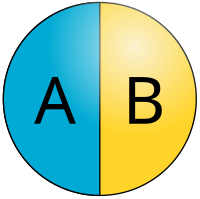
Photo from wikipedia
Abstract Recent advances in graphene chemistry indicate that it may play vital role in water treatment processes, especially when synergistically coupled with other functional moieties. Thus, graphene oxide (GO) was… Click to show full abstract
Abstract Recent advances in graphene chemistry indicate that it may play vital role in water treatment processes, especially when synergistically coupled with other functional moieties. Thus, graphene oxide (GO) was mono/dual-functionalized with amino and thiol groups to obtain amino–GO (GONH), thiol–GO (GOSH) and amino/thiol–GO (GOSN). These were characterized and used for Pb(II) adsorption. The Fourier transform infrared spectroscopy (FTIR), X-ray diffraction and thermogravimetric analysis confirmed the success of these syntheses. The adsorption process was spontaneous and endothermic, while the rate was high with up to 80% of total adsorption occurring within the initial 30 min of starting the experiment. Adsorption mechanism involved electrostatic interactions between active functional groups and the Pb(II) cations, but the data fits to models (either Langmuir, Freundlich or Brouers–Sotolongo–fractal adsorption isotherm model) were dependent on the specific functional groups involved on the adsorbent involved in the process. For instance, adsorption on the highly electrostatic functional groups having oxygen and nitrogen followed Langmuir model, while a combination of the weak and strong functional groups (involving the above as well as sulphur groups) followed the Freundlich or the more complex Brouers–Sotolongo–fractal adsorption isotherm model. The adsorption capacity of GONH (138.0 mg/g) was higher than for the GOSH (101.5 mg/g) and GOSN (97.8 mg/g), but relative to other adsorbents reported in literature, these values point to their potential for treatment of Pb(II) in real wastewater.
Journal Title: Journal of environmental chemical engineering
Year Published: 2019
Link to full text (if available)
Share on Social Media: Sign Up to like & get
recommendations!